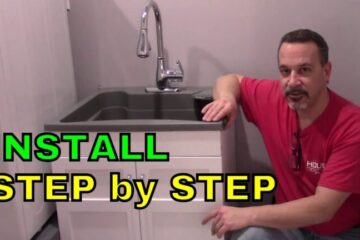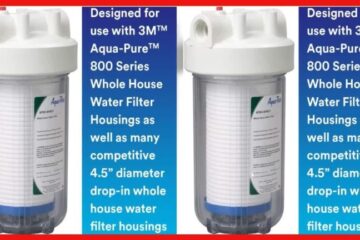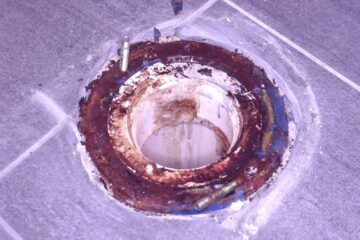In today’s article, you will be guided through a comprehensive step-by-step process on how to effectively flush a water heater. With a focus on providing you with the necessary knowledge and techniques, this guide will help you maintain optimal performance and extend the lifespan of your water heater. By following these clear and concise instructions, you will be equipped with the skills to carry out this essential maintenance task with confidence and professionalism. So, let’s dive into the details and ensure your water heater functions flawlessly for years to come.
Turn off the power and gas supply
Shut off the power
Before starting the process of flushing your water heater, it is essential to turn off the power supply. This is necessary to ensure your safety and prevent any accidents. Locate the circuit breaker that powers your water heater and switch it off. Make sure to handle the circuit breaker with caution to avoid any electrical shock.
Turn off the gas supply
If your water heater is powered by gas, it is crucial to turn off the gas supply before proceeding with the flushing process. Locate the gas supply valve near the water heater and close it completely. This will ensure that no gas is flowing into the water heater during the flushing process, reducing the risk of gas leaks or other potential hazards.
Gather necessary materials and tools
Materials needed
To successfully flush your water heater, you will need the following materials:
- Garden hose: You will need a garden hose long enough to reach from your water heater to the designated drain area.
- Bucket or drain pan: It is important to have a bucket or drain pan to collect any residual water that may leak during the flushing process.
- Gloves: Wearing gloves will protect your hands from any hot water or potential contaminants that may be released during the process.
- Towels or rags: Keep some towels or rags handy to clean up any spills or messes that may occur while flushing the water heater.
Tools required
In addition to the materials mentioned above, you will need the following tools:
- Screwdriver or wrench: Depending on the type of water heater you have, you may need a screwdriver or wrench to remove the drain valve.
- Pliers: Pliers may be necessary to secure the hose to the drain valve or perform any other tasks that require a firm grip.
Prepare the water heater for flushing
Locate the drain valve
Locate the drain valve on your water heater. It is typically located near the bottom of the tank and is designed to allow the release of water from the tank during the flushing process. The drain valve may have a handle or require the use of a screwdriver or wrench to open and close.
Attach a hose to the drain valve
Take the garden hose and securely attach it to the drain valve on the water heater. Ensure that the connection is tight to prevent any leaks or water loss during the flushing process. The other end of the hose should be placed in a suitable drainage area, such as a floor drain, utility sink, or outside.
Position the other end of the hose
Carefully position the other end of the hose in the designated drainage area to avoid any water damage or flooding. Ensure that the hose is securely placed and will not become dislodged during the flushing process.
Open any nearby hot water faucet
To facilitate the water heater drainage process, it is necessary to open any nearby hot water faucet. This will help relieve pressure inside the tank and allow the water to flow out more smoothly.
Drain the water heater tank
Let the water heater cool down
Allow the water heater to cool down before draining it. Hot water can cause burns or scalding, so it is crucial to ensure your safety during the process. It is recommended to wait at least an hour before proceeding to the next steps.
Attach the other end of the hose
Once the water heater has cooled down, attach the other end of the hose to the designated drainage area securely. Double-check the connection to avoid any leaks or unwanted spills.
Turn on the drain valve
Using a screwdriver or wrench, turn on the drain valve by slowly opening it counterclockwise. Be prepared for the water to start flowing out of the hose and into the drainage area. If you have opened a nearby hot water faucet, you will notice that the water starts flowing out through that faucet as well.
Close the drain valve
After the water from the water heater has completely drained, close the drain valve by turning it clockwise with a screwdriver or wrench. This step will ensure that no water continues to drain out of the tank after you have finished the flushing process.
Flush the water heater
Turn on the cold water supply
Now it is time to flush the water heater to remove any sediment or buildup that may have accumulated over time. Turn on the cold water supply to the water heater. This will allow fresh water to enter the tank and help flush out any debris or sediment that may remain inside.
Check for any leaks
While the cold water supply is running, carefully inspect all the connections and valves for any leaks. Pay close attention to the hose connections and the drain valve. If any leaks are detected, tighten the connections as necessary to prevent water loss or damage.
Continue flushing until water runs clear
Allow the cold water to flow through the water heater for a few minutes or until the water coming out through the hose runs clear. Flushing the water heater thoroughly will help ensure that any remaining sediment or deposits are completely removed, improving the efficiency and longevity of the appliance.
Turn on the power and gas supply
Close the drain valve
Once the water appears to be running clear, close the drain valve by turning it clockwise with a screwdriver or wrench. This will prevent any water from escaping the tank or causing unwanted flooding.
Turn on the cold water supply
Turn on the cold water supply to the water heater to refill the tank. Make sure the drain valve is tightly closed before proceeding with this step to avoid any potential leaks.
Turn on the power
If your water heater is electric, you can now safely turn on the power supply. Locate the circuit breaker that powers the water heater and switch it back on. This will provide the necessary electricity to heat the water.
Relight the pilot light
For gas-powered water heaters, it is crucial to relight the pilot light after the flushing process is complete. Follow the manufacturer’s instructions on how to relight the pilot light safely. This step will ensure the proper functioning of your gas water heater.
Test the water heater
Let the water heater heat up
Allow the water heater some time to heat up the water inside the tank. The heating process may take a while, especially if the tank was fully drained during the flushing process. Be patient and let the water heater reach the desired temperature.
Check the temperature and pressure (T&P) relief valve
While the water heater is heating up, take a moment to inspect the temperature and pressure relief valve (T&P valve). The T&P valve is an important safety feature of the water heater and should be checked periodically. Ensure that it is not leaking or releasing excessive pressure. If any issues are detected, contact a professional for further assistance.
Check for any leaks
After the water heater has reached the desired temperature, carefully inspect all the connections, valves, and pipes for any leaks or signs of water damage. If any leaks or issues are found, it is advisable to address them promptly to prevent further damage or potential safety hazards.
Perform regular water heater maintenance
Check the anode rod
Regular maintenance of your water heater is essential to ensure its optimal performance and prolong its lifespan. One crucial component to check is the anode rod. The anode rod helps prevent corrosion inside the tank. Over time, it can become depleted and require replacement. Check the condition of the anode rod and replace it if necessary, following the manufacturer’s guidelines.
Flush the water heater annually
Flushing your water heater annually is recommended to prevent the accumulation of sediment and mineral deposits. This simple maintenance task will help maintain the efficiency and performance of your water heater. Follow the same steps outlined in this guide to flush your water heater on a yearly basis.
Consider professional maintenance
While performing regular maintenance on your water heater is essential, it is recommended to consider professional maintenance from time to time. A certified plumber or HVAC technician can ensure that your water heater is in optimal condition, detect any potential issues, and provide expert advice on how to keep your water heater running efficiently.
Troubleshooting common issues
No hot water
If you find yourself with no hot water after flushing your water heater, there could be several possible causes. Check that the power or gas supply is restored, the circuit breaker is functioning correctly, and the pilot light (for gas-powered heaters) is lit. If these factors are not the issue, it may be a sign of a more significant problem, and it is advisable to contact a professional for further diagnosis and repair.
The water not getting hot enough
If your water is not getting hot enough after flushing the water heater, there could be a few reasons for this issue. First, check the thermostat setting on the water heater and adjust it if necessary. If the thermostat is set correctly, the heating element or gas burner might require cleaning or replacement. Contact a professional to assess and address the underlying cause of the problem.
Strange noises from the water heater
If you notice strange noises coming from your water heater after flushing, it could indicate an issue with the heating element, sediment buildup, or loose components. It is important to investigate the source of the noises to ensure the proper functioning of the water heater and prevent any potential damage. Consult a professional if the noises persist or worsen.
Leaking water heater
A leaking water heater is a serious issue that should be addressed promptly to prevent water damage and potential safety hazards. If you notice any signs of water leakage, such as puddles or dampness around the water heater, it is crucial to shut off the power and gas supply immediately. Contact a professional plumber to inspect and repair the leaking water heater as soon as possible.
Final tips and considerations
Be cautious of hot water and scalding risks
Throughout the flushing and maintenance process, it is essential to exercise caution to avoid any burns or scalding injuries. Always wear protective gloves and keep children and pets away from the area. Hot water can cause severe harm, so be mindful of this risk to ensure your safety.
Consider hiring a professional
While flushing your water heater can be done as a DIY project, it is important to recognize your limitations and consider hiring a professional if you are uncomfortable or unsure about any steps of the process. A certified plumber or HVAC technician can not only perform the flushing but also provide valuable advice and insights to keep your water heater in optimal condition.
Follow the manufacturer’s instructions
Always refer to the manufacturer’s instructions and guidelines specific to your water heater model when performing any maintenance or repairs. Each water heater may have unique requirements and specifications, and following the manufacturer’s instructions will help ensure the proper care and maintenance of your appliance.



